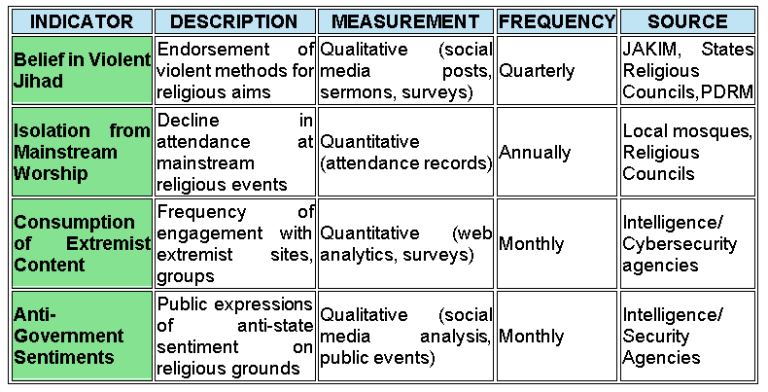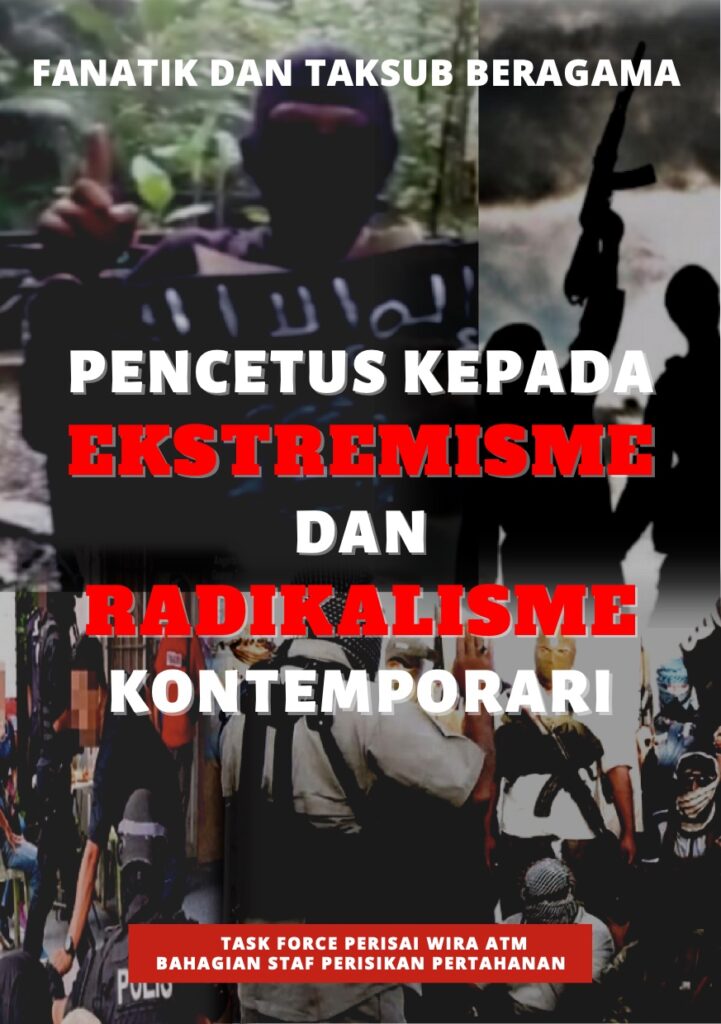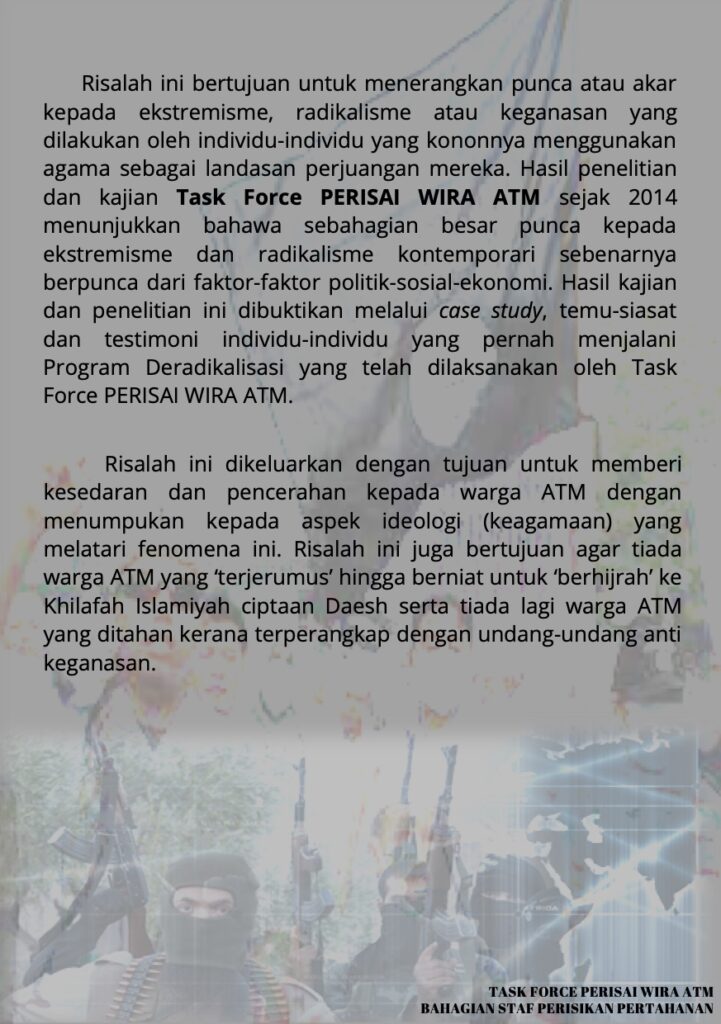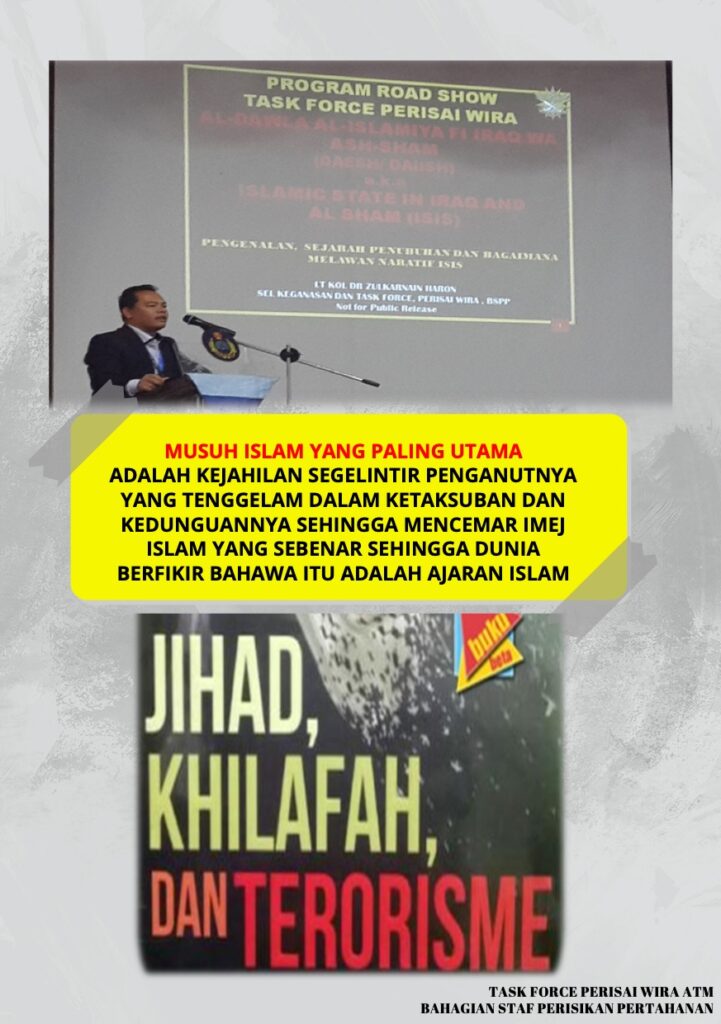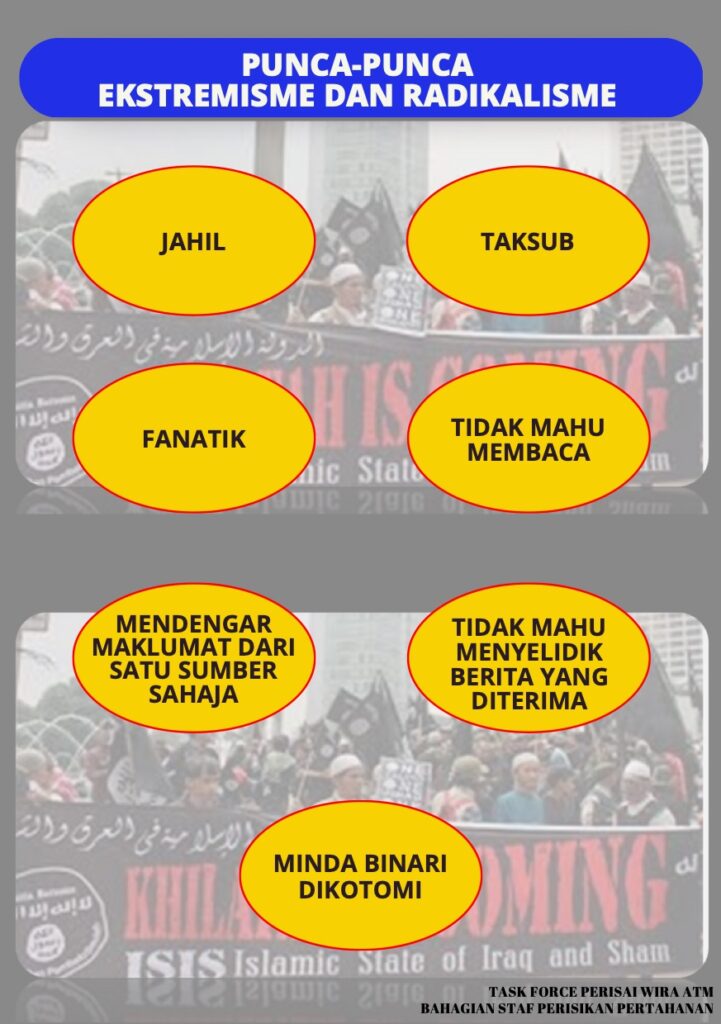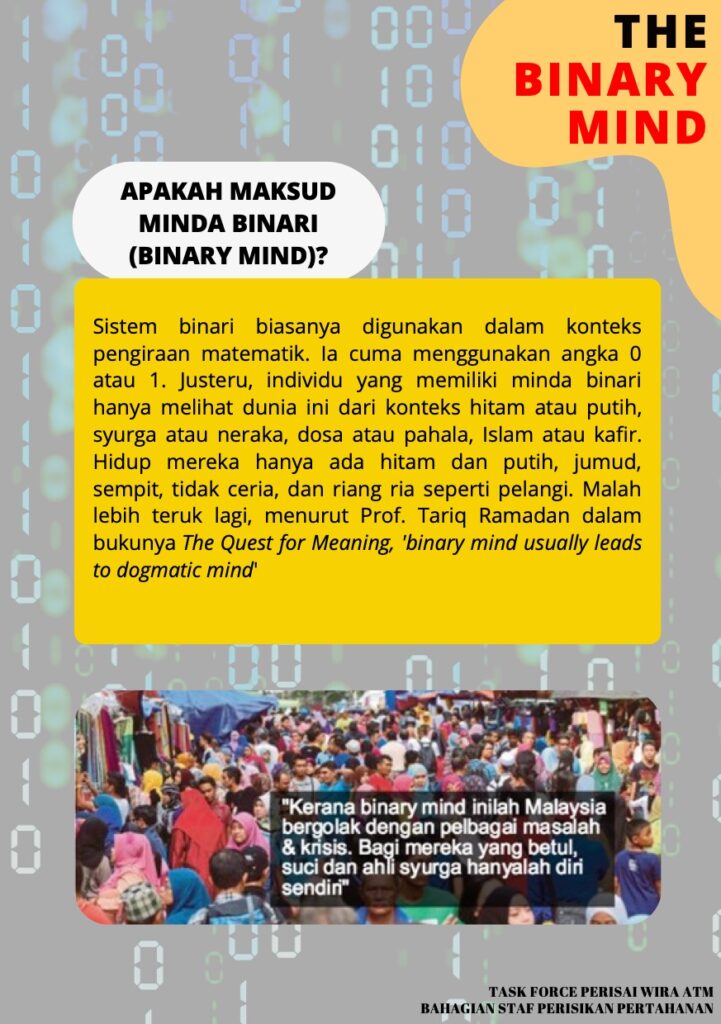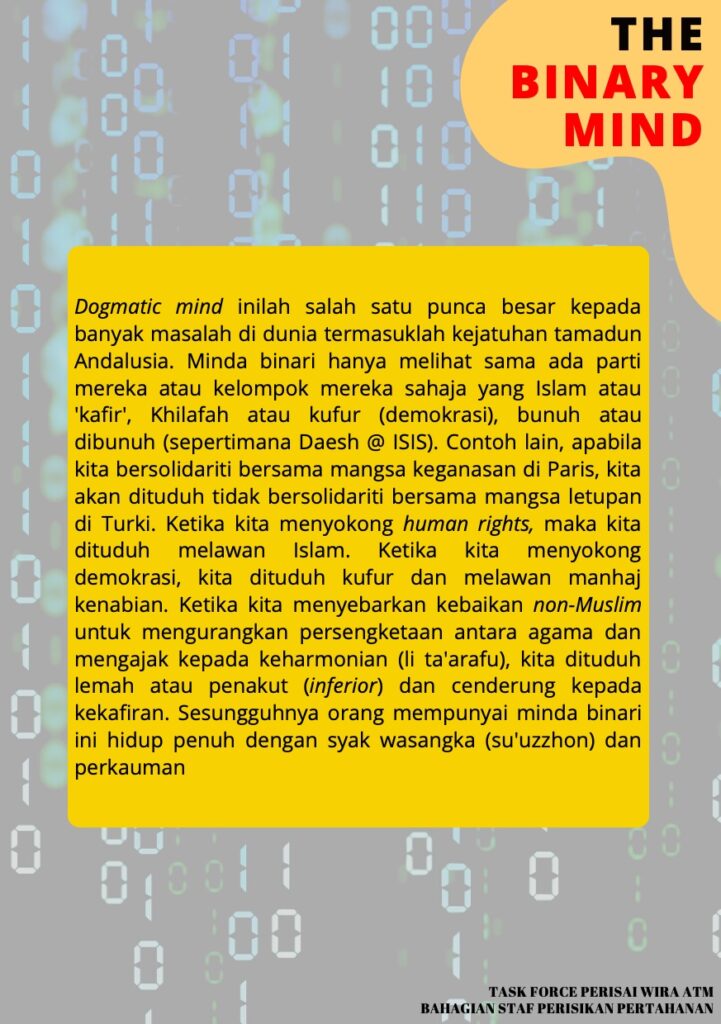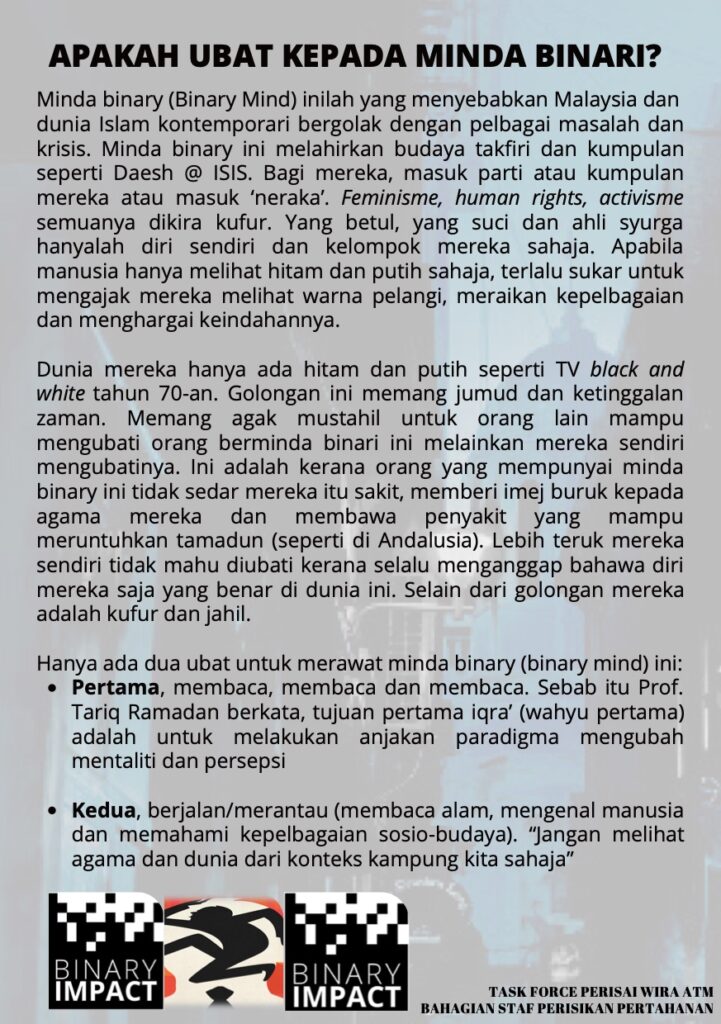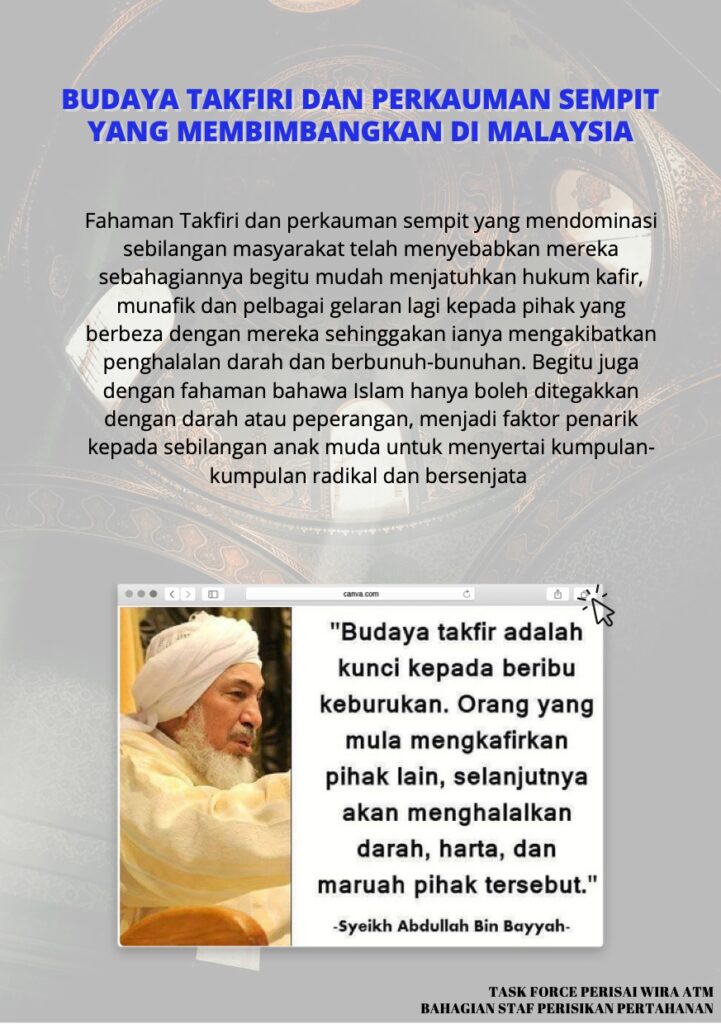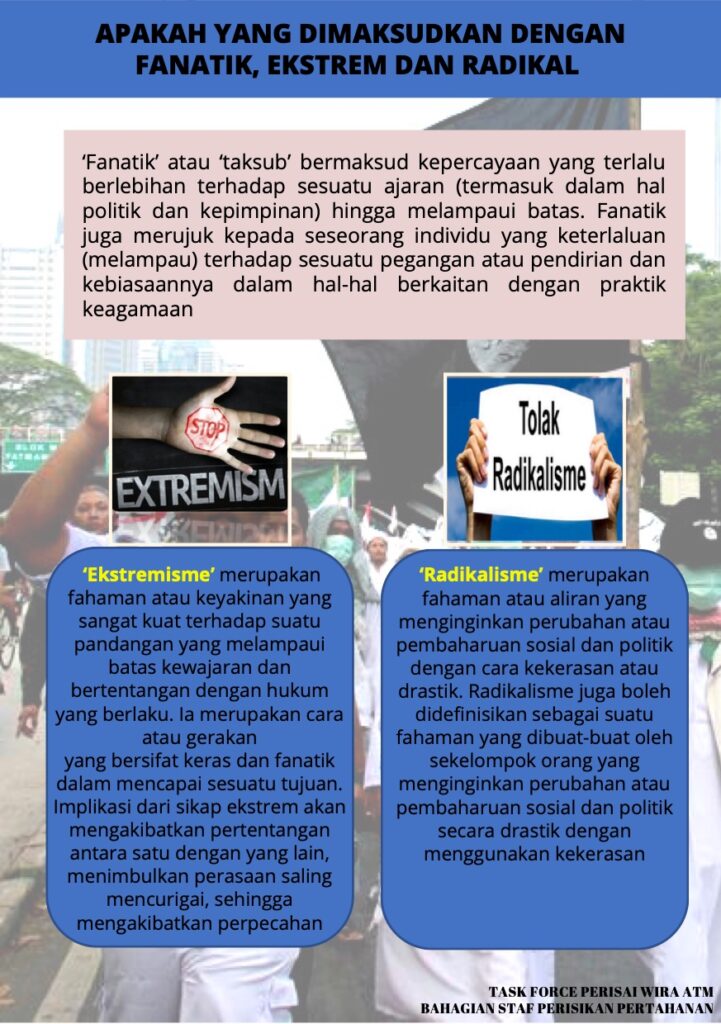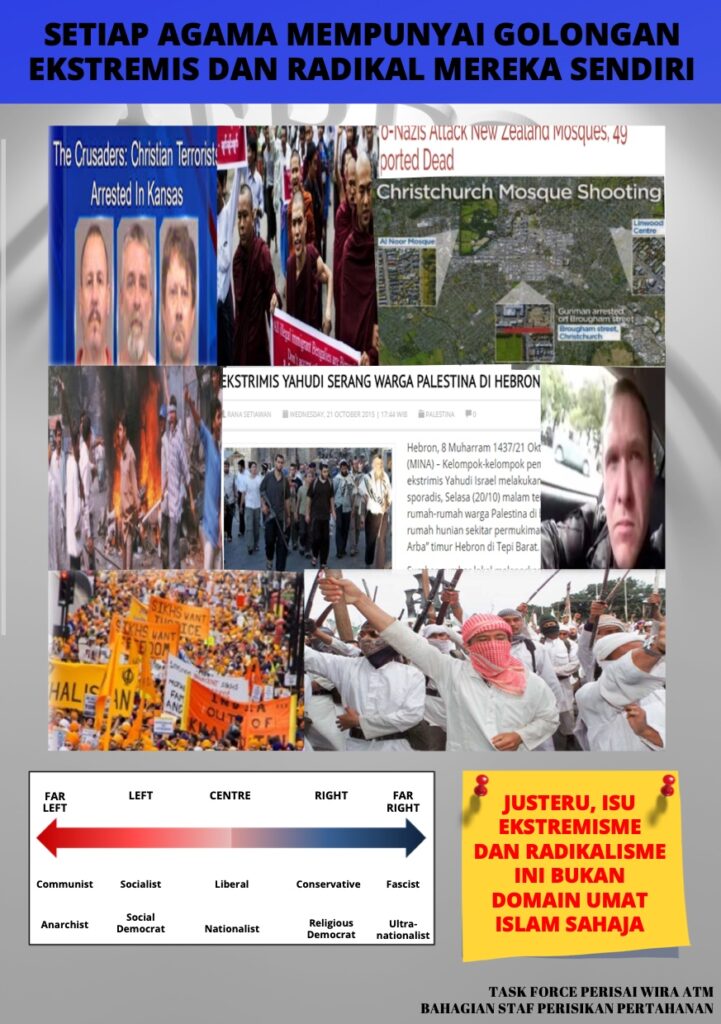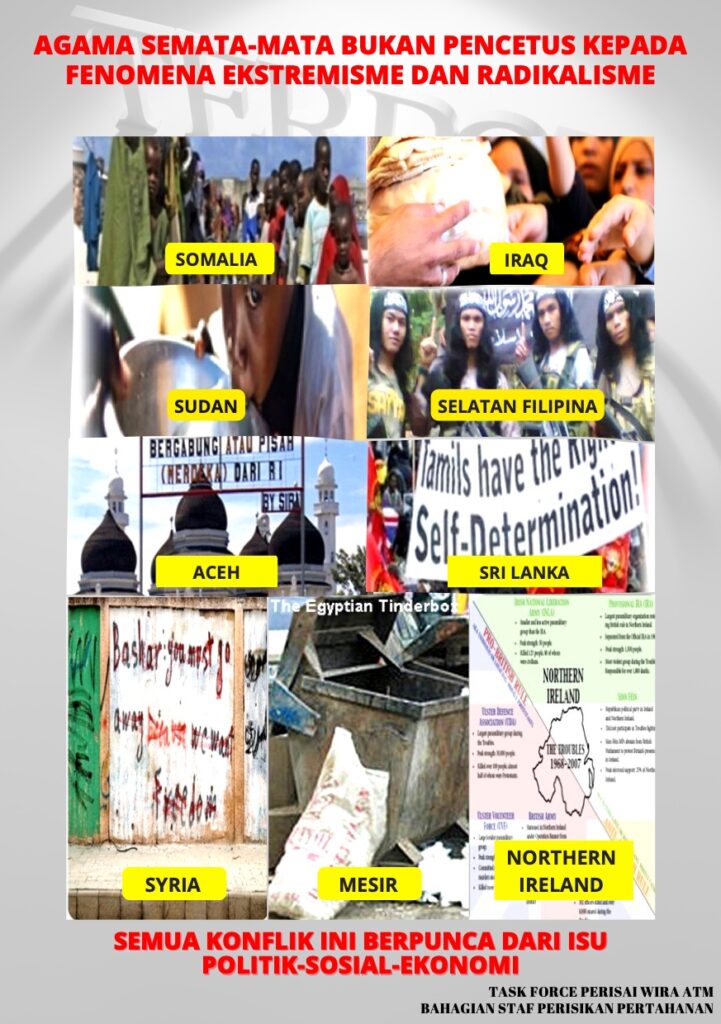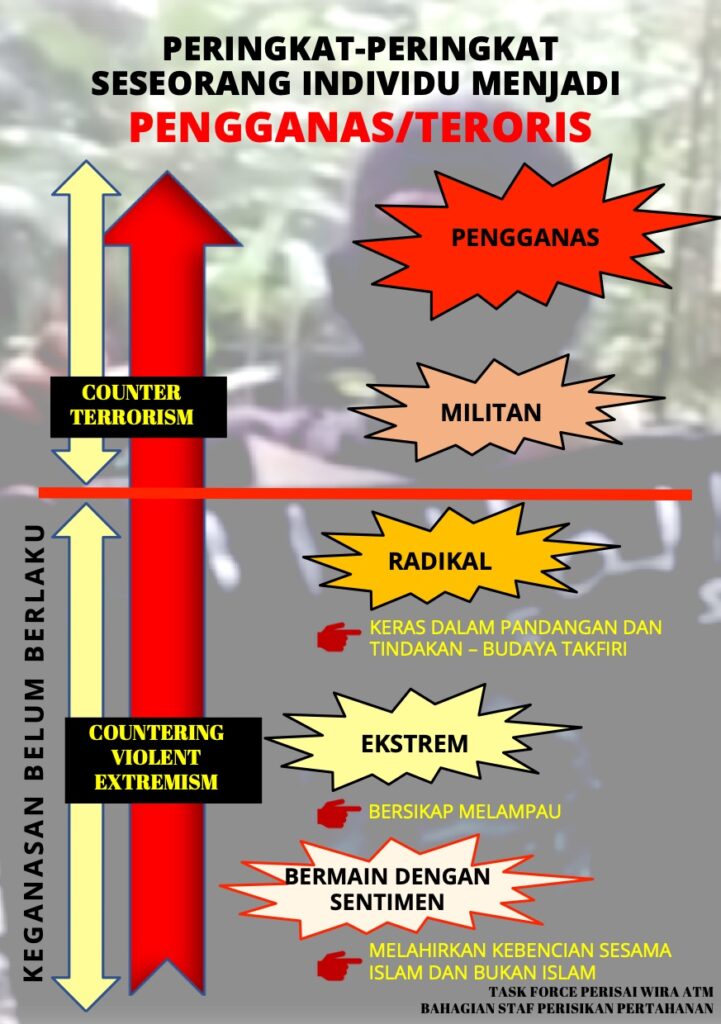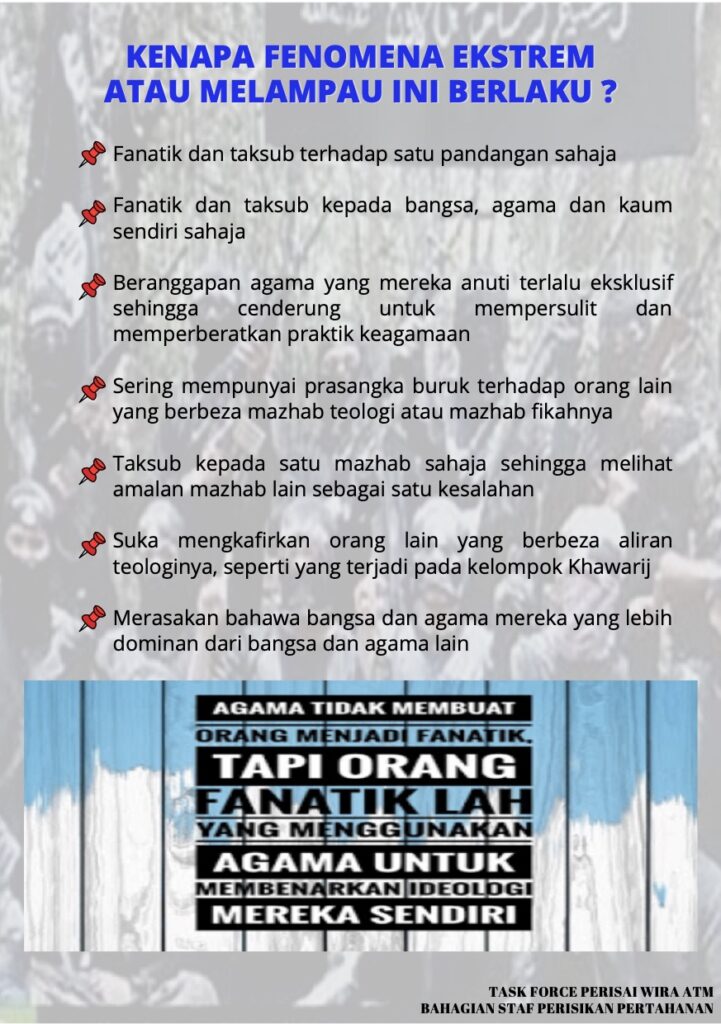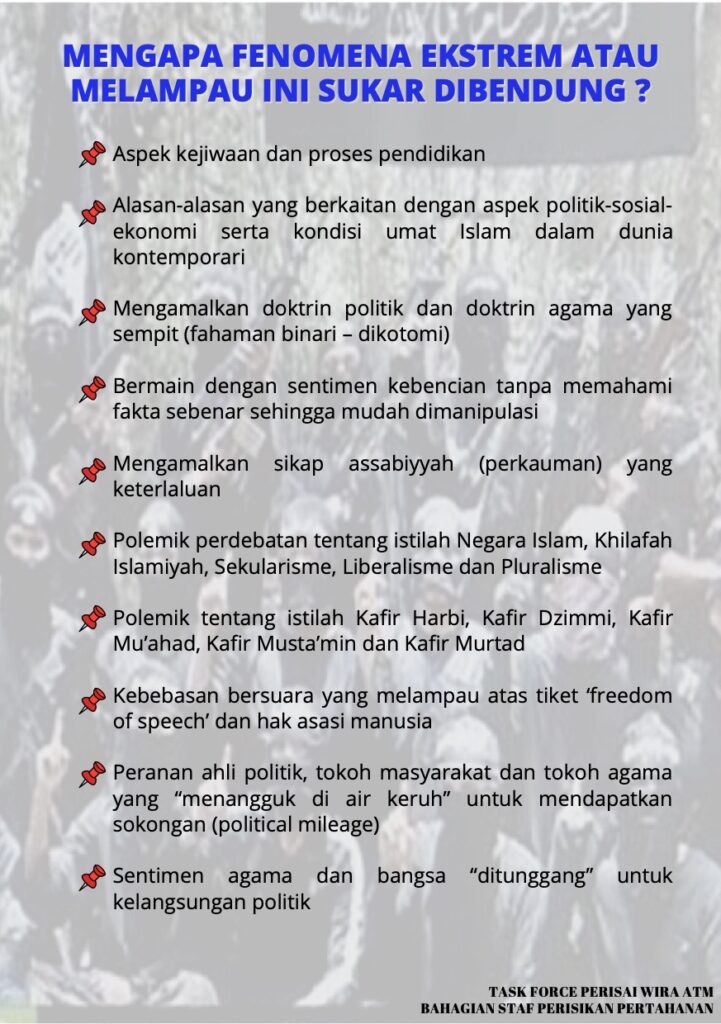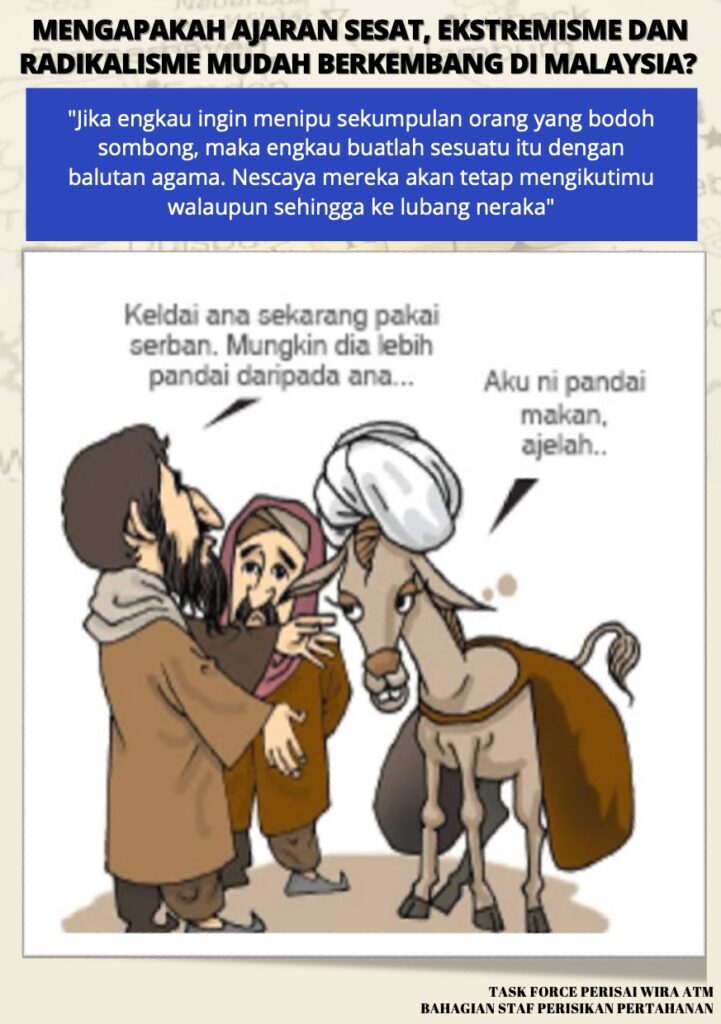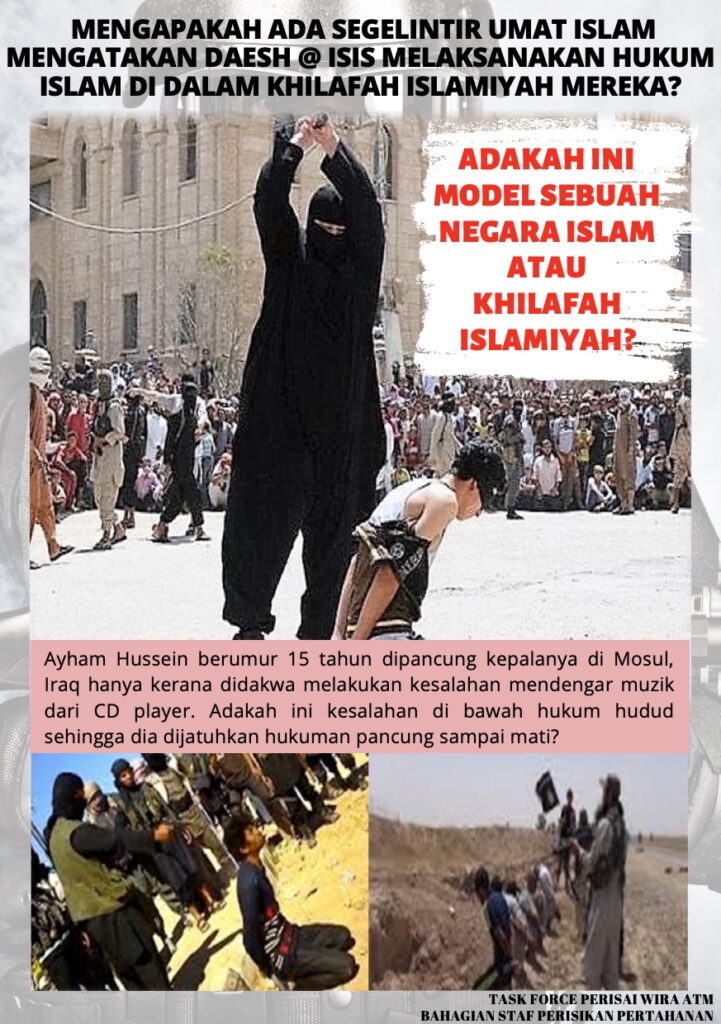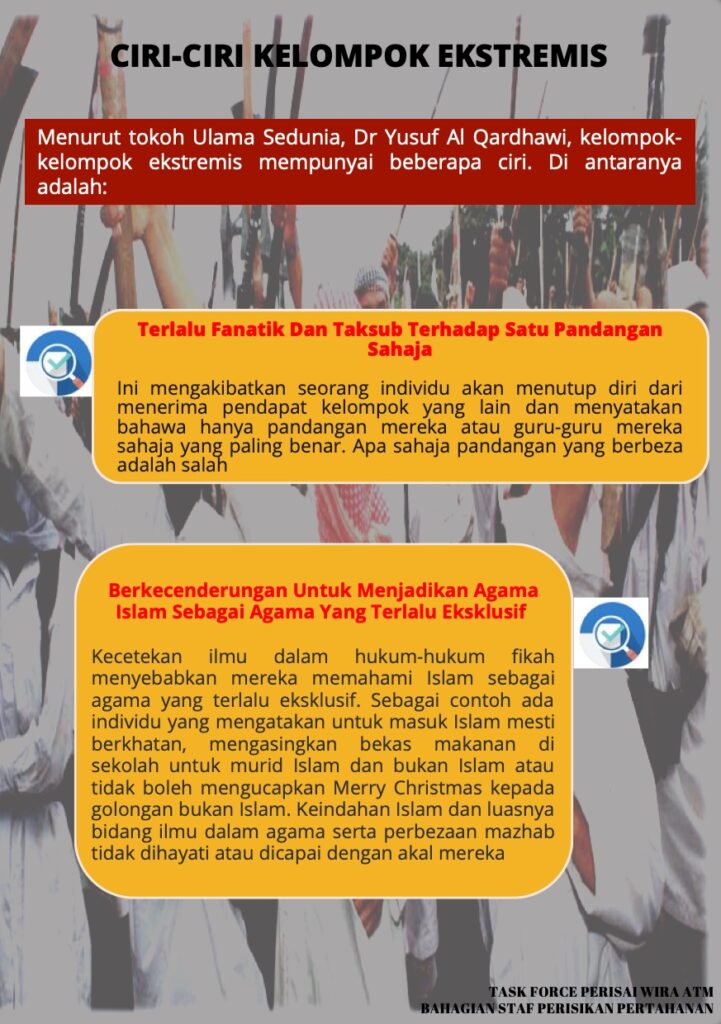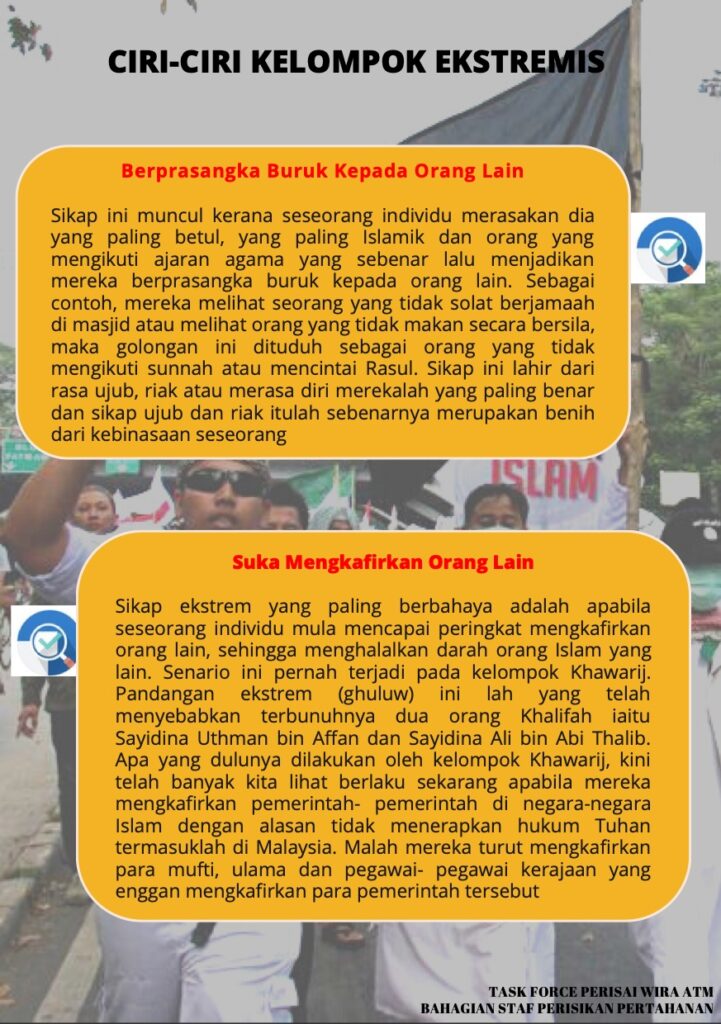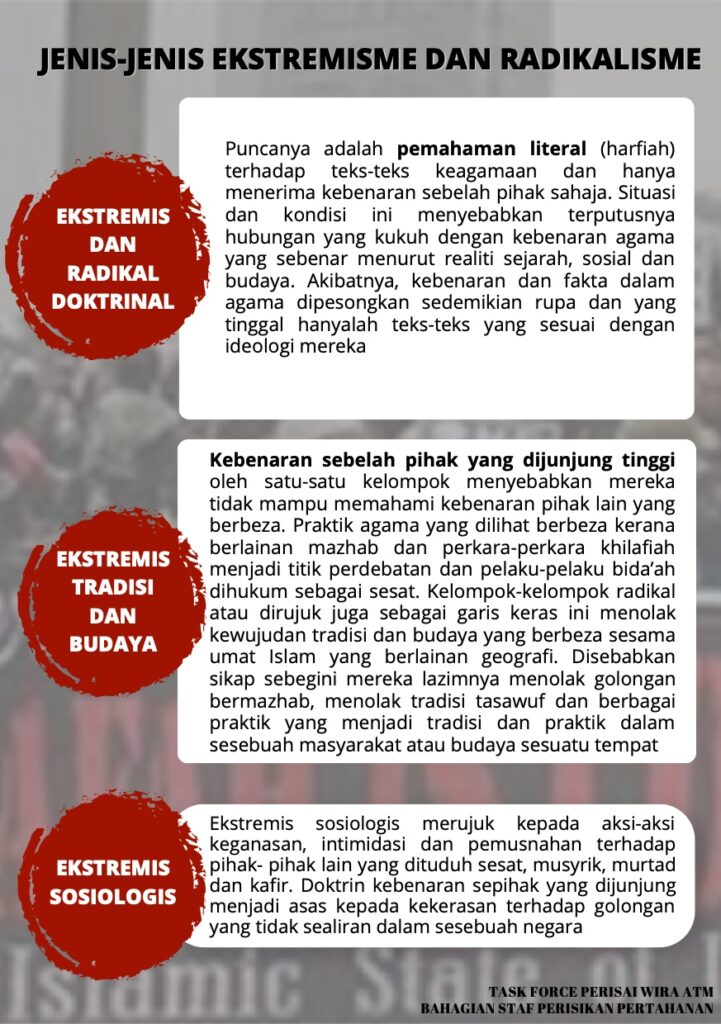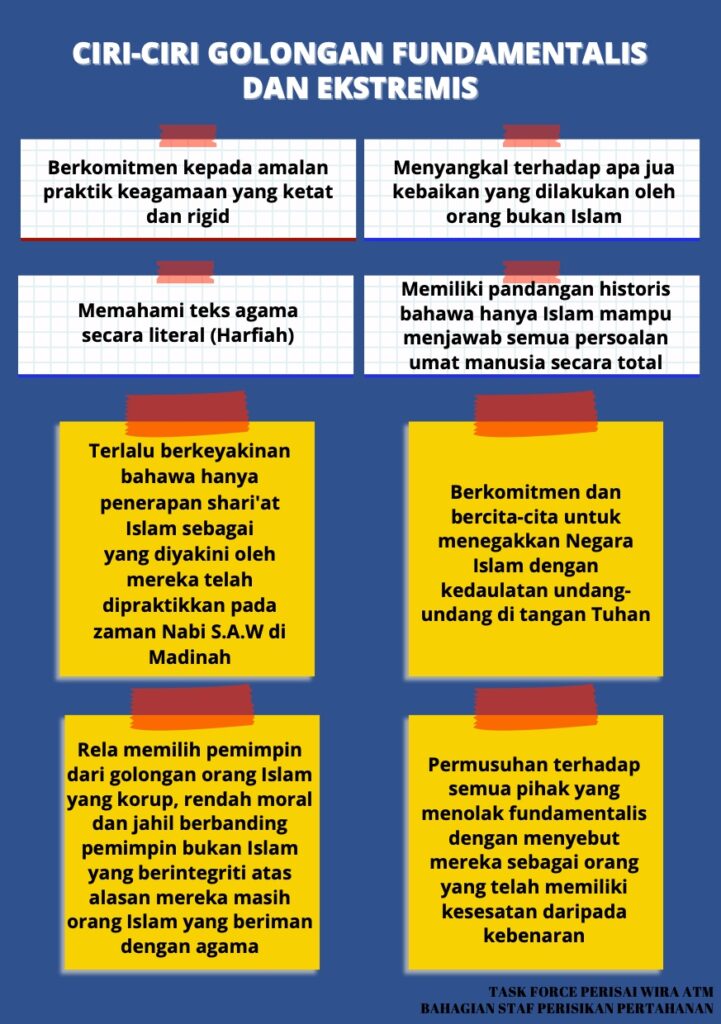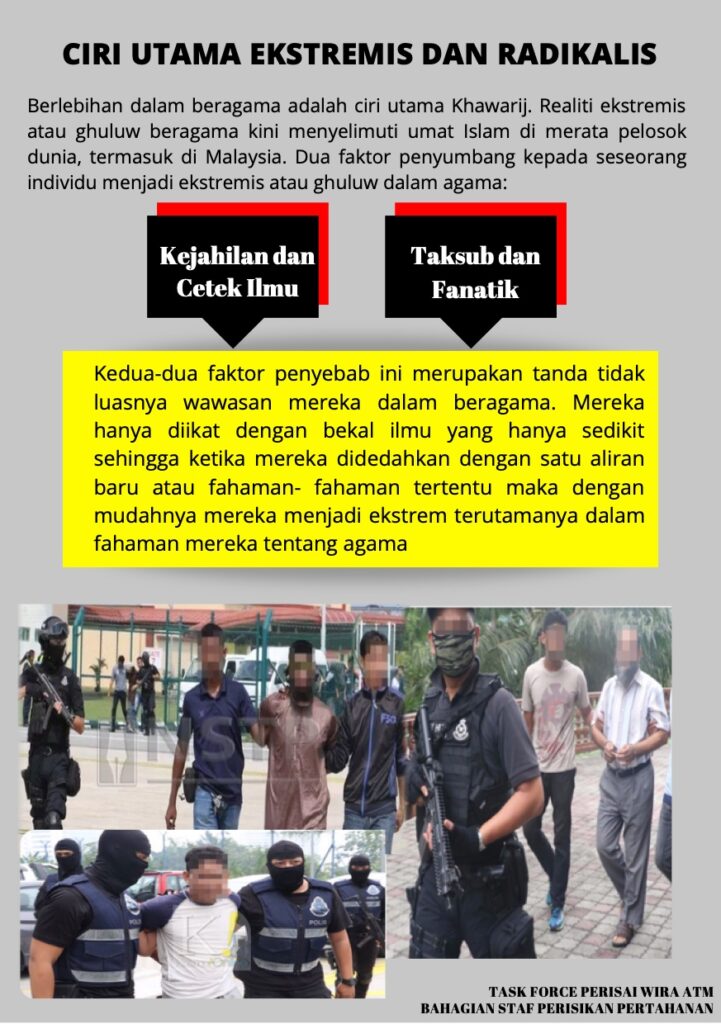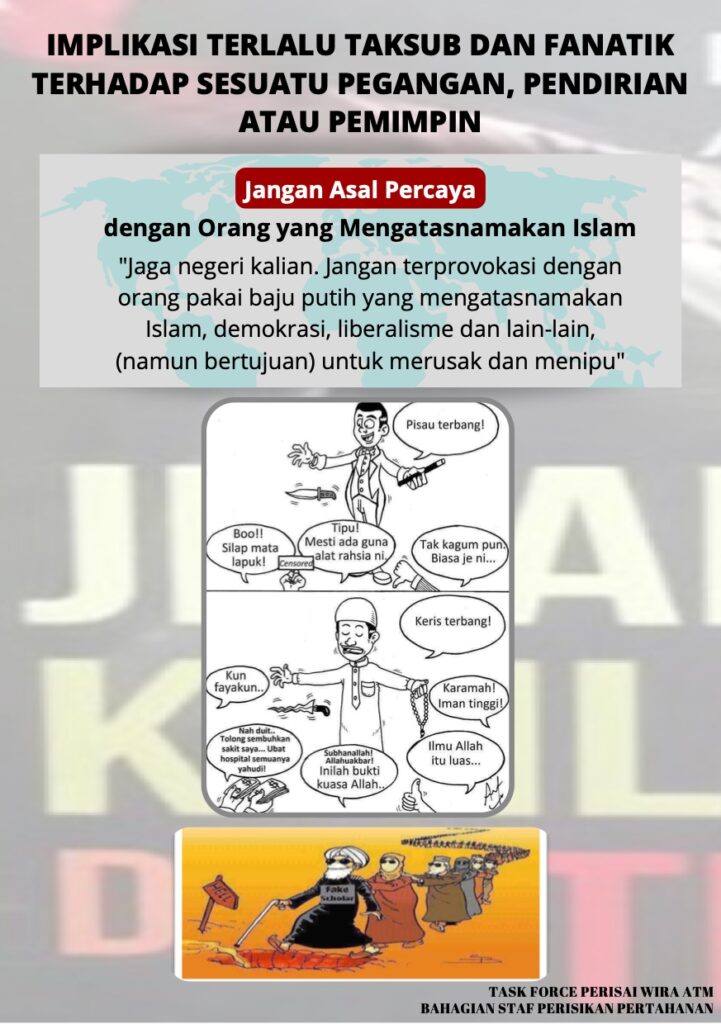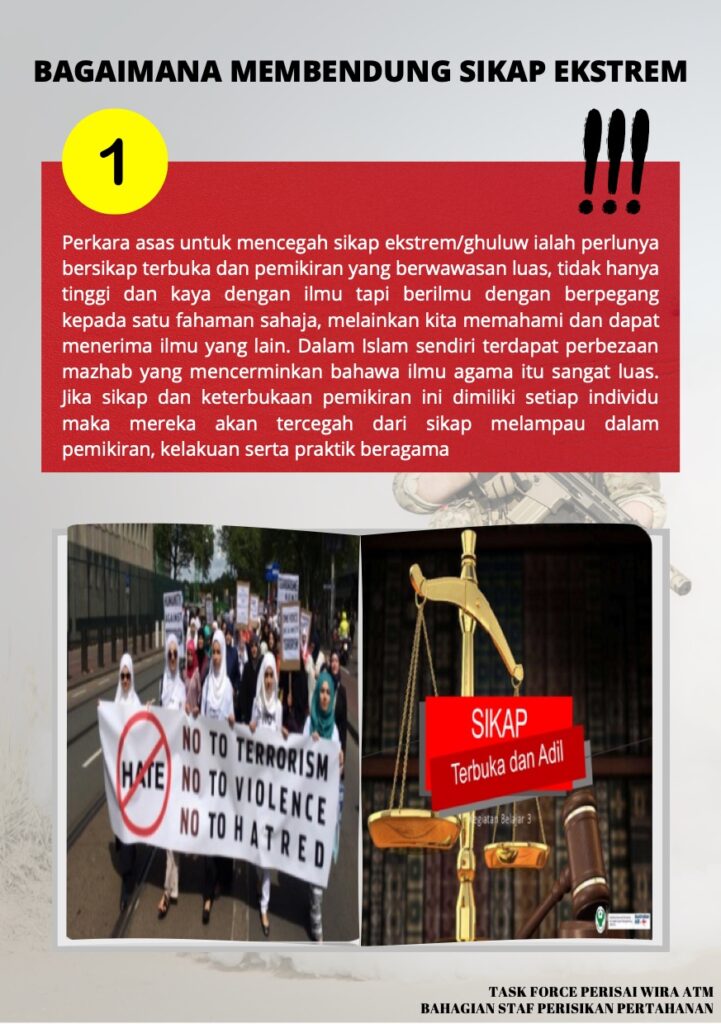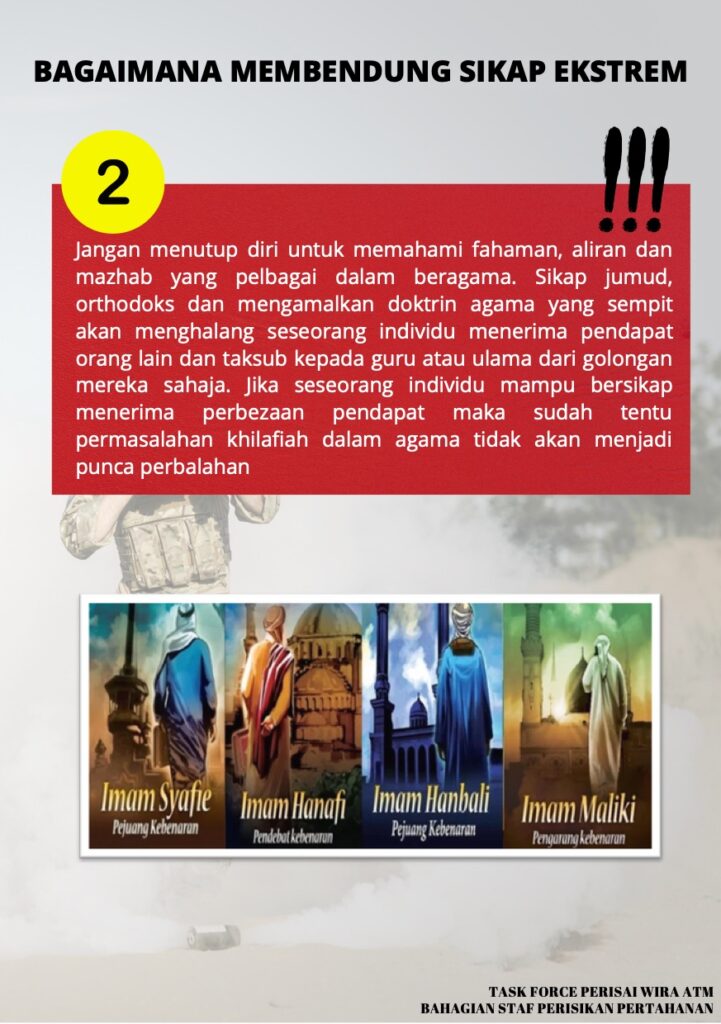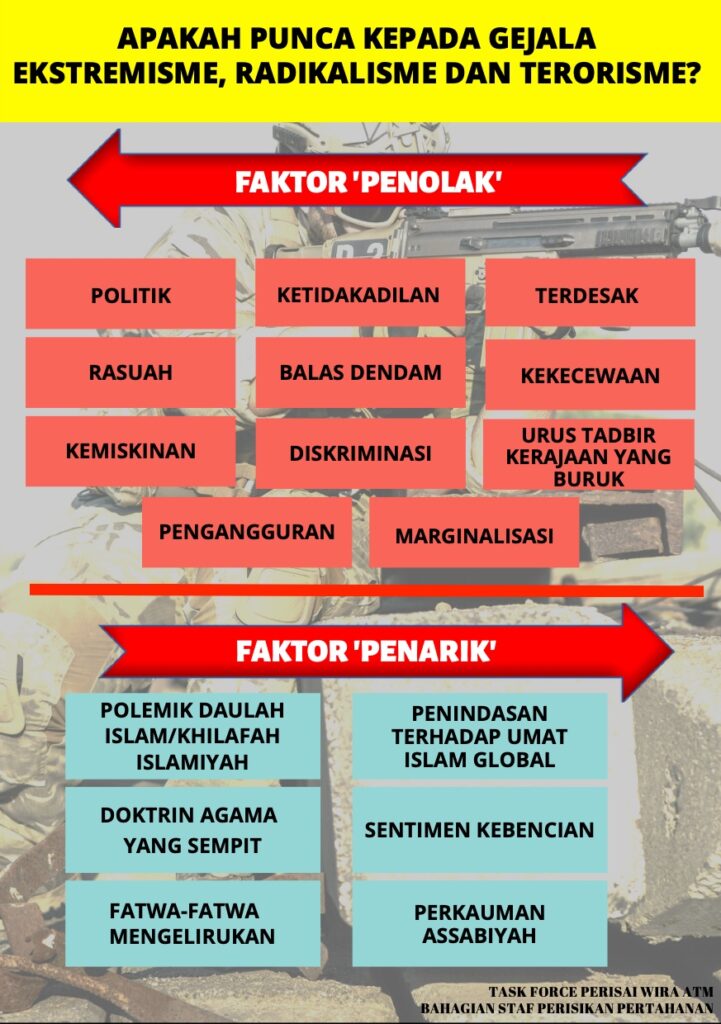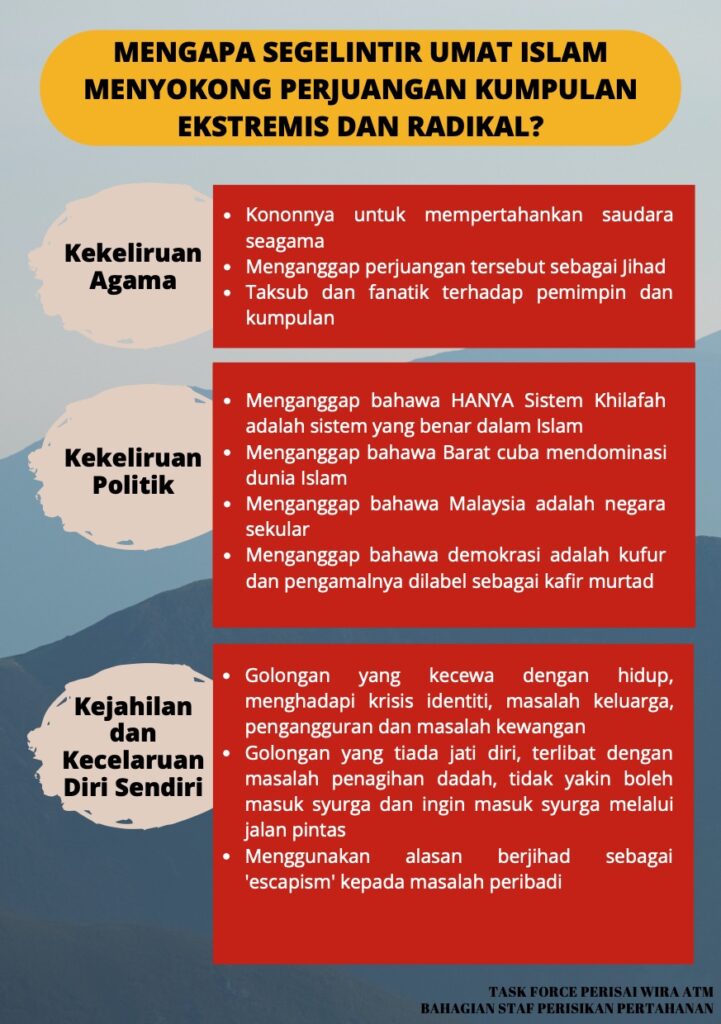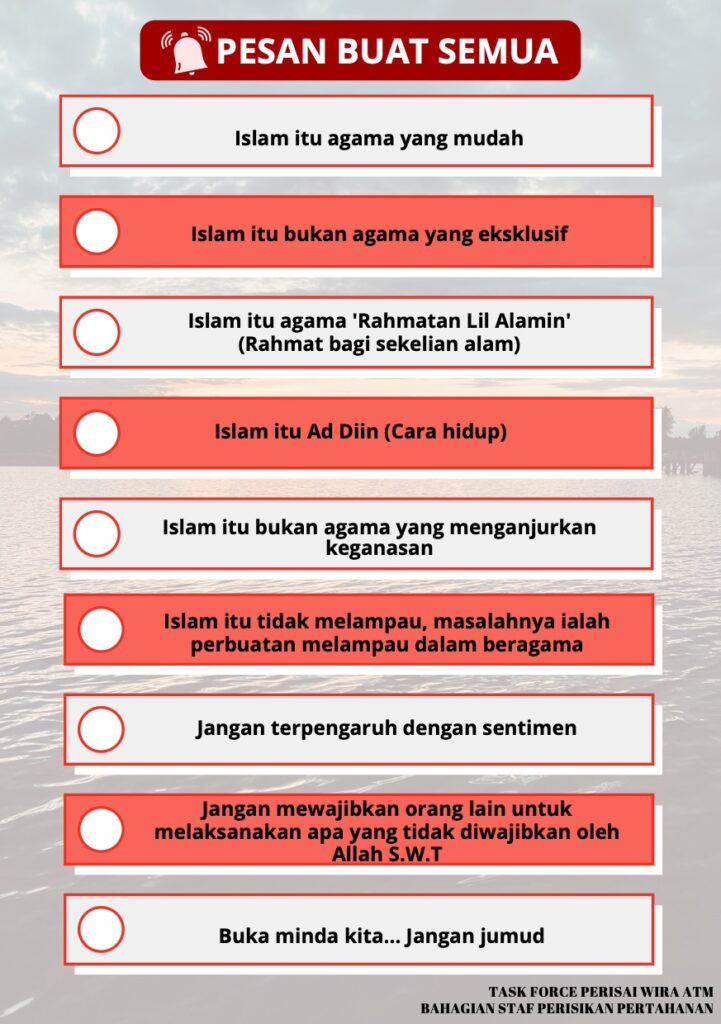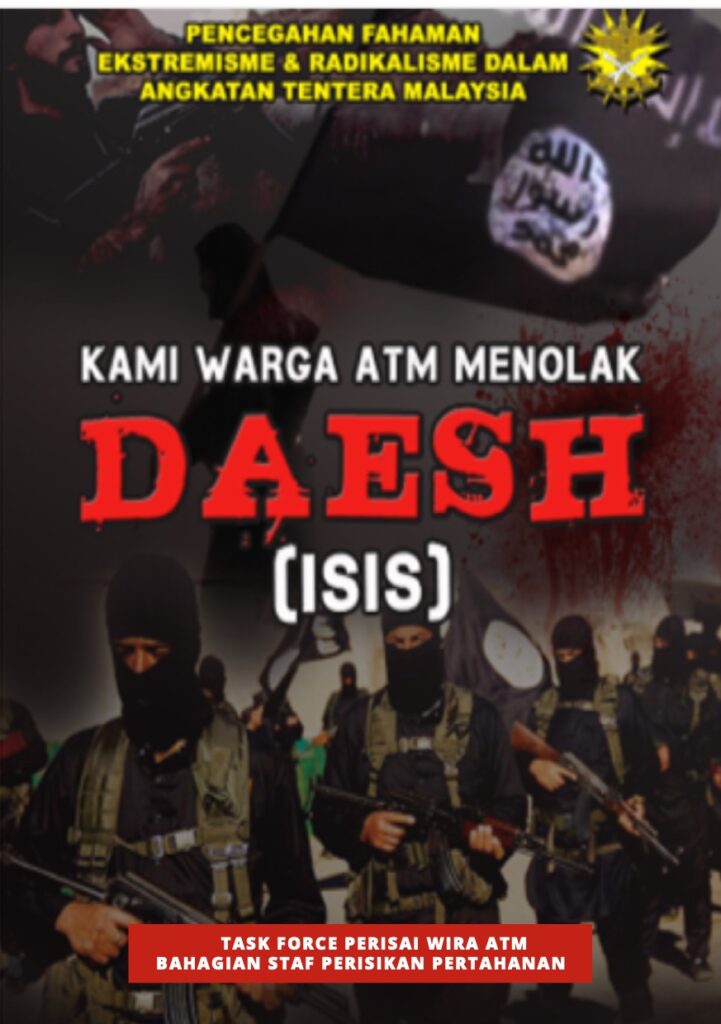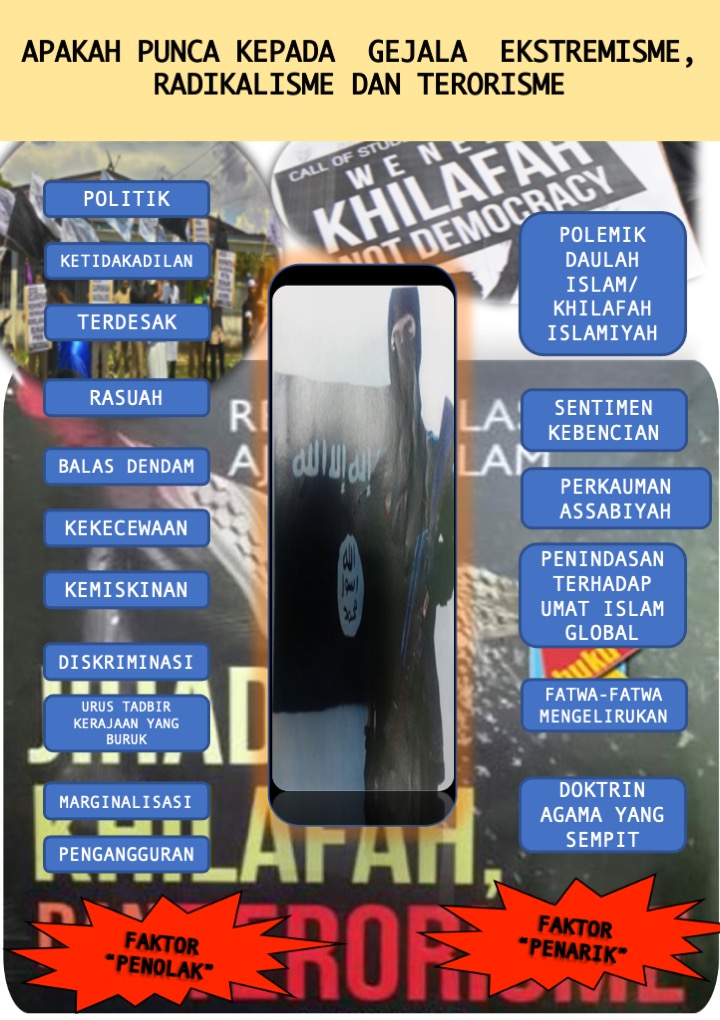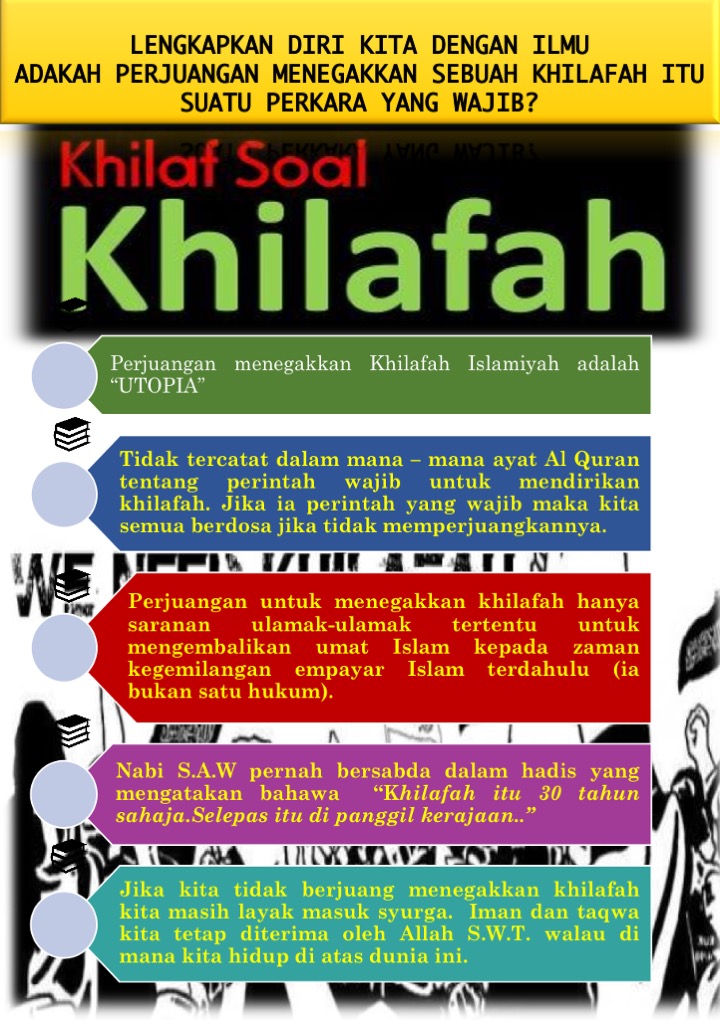PENDAHULUAN
Isu ekstremisme dan radikalisme berorientasikan agama semakin menjadi ancaman kepada kestabilan keselamatan nasional, khususnya dalam konteks Malaysia yang masyarakatnya bersifat majmuk dan berbilang agama. Walaupun Malaysia secara umumnya dikenali sebagai negara Islam sederhana, perkembangan global dan serantau telah membuktikan bahawa pengaruh ideologi ekstremis tetap mampu menembusi sempadan negara. Fenomena ini mendorong kepada keperluan untuk memahami, mengenal pasti dan menilai indikator awal kecenderungan ekstremisme agama bagi memperkukuh usaha pencegahan keganasan. Dengan pendekatan yang sistematik terhadap pengesanan awal, Malaysia dapat membina daya tahan masyarakat daripada ancaman radikalisasi yang semakin kompleks dan mencabar dewasa ini.
Definisi dan Kepentingan Mengenalpasti Indikator Awal
Ekstremisme berorientasikan agama merujuk kepada fahaman yang memutarbelitkan prinsip agama untuk membenarkan tindakan melampau yang boleh membawa kepada keganasan, penindasan atau diskriminasi terhadap pihak lain. Radikalisme pula merujuk kepada proses perubahan pemikiran yang membawa seseorang individu daripada kepercayaan sederhana kepada pandangan ekstrem yang menolak norma sosial dan undang-undang sedia ada. Mengenalpasti indikator awal ekstremisme adalah penting dalam konteks Malaysia kerana ia membolehkan intervensi awal dilakukan sebelum seseorang itu melangkah ke fasa tindakan keganasan. Ini termasuk pemantauan terhadap perubahan tingkah laku, kecenderungan ideologi yang menyeleweng, perlanggaran undang-undang serta aktiviti sosial yang menunjukkan sokongan terhadap perjuangan bersifat militan.
Hubungan Antara Ideologi Agama, Ekstremisme dan Keganasan
Dalam banyak kes, ideologi agama telah dimanipulasi untuk memberikan legitimasi kepada tindakan kekerasan. Di Malaysia, pengaruh ideologi seperti Salafi Jihadi dan takfiri telah membuktikan bagaimana fahaman keagamaan yang sempit boleh menjadi pemangkin kepada radikalisasi dan seterusnya keganasan. Individu yang terpengaruh dengan naratif ini bukan sahaja melihat keganasan sebagai satu kewajipan agama, tetapi juga menganggap ia satu bentuk jihad untuk menegakkan ‘kebenaran’. Justeru, memahami bagaimana ideologi agama diseleweng dan berakar umbi dalam komuniti adalah kunci penting untuk merangka strategi pencegahan dan pemulihan yang berkesan, sekali gus melindungi keharmonian serta keselamatan negara.
Latar Belakang Ekstremisme Agama di Malaysia
Malaysia mula berdepan dengan ancaman ekstremisme agama secara serius pada lewat 1990-an dan awal 2000-an, terutamanya selepas penangkapan ahli Jemaah Islamiyah (JI) yang aktif merekrut dan menjalankan latihan ketenteraan di dalam dan luar negara. Kumpulan ini mempunyai hubungan langsung dengan Al-Qaeda yang ketika itu memperluaskan pengaruhnya di Asia Tenggara. Pada dekad berikutnya, kemunculan ISIS @ Daesh telah menarik perhatian generasi baru militan Malaysia dimana sebilangan rakyat Malaysia telah ‘berhijrah’ ke Syria dan Iraq untuk berjihad, manakala yang lain terlibat dalam merancang serangan domestik. Hubungan ideologi dan jaringan antara JI, Al-Qaeda dan ISIS membentuk ekosistem ekstremisme rentas sempadan yang saling memperkukuh antara satu sama lain di rantau ini, menjadikan Malaysia sebahagian daripada medan operasi dan sokongan mereka.
Dari sudut sosial, politik dan ekonomi, beberapa faktor telah dikenal pasti menjadi pemangkin kepada penularan ideologi ekstremis. Ketidakpuasan terhadap ketidakadilan sosial, jurang ekonomi antara kaum dan wilayah serta marginalisasi golongan minoriti seperti pelarian Rohingya dan komuniti Muslim dari Selatan Thailand mencipta ruang untuk ideologi radikal berakar. Selain itu, persekitaran politik yang kadangkala mengeksploitasi sentimen agama dan kaum mempercepatkan lagi polarisasi dalam masyarakat. Kelemahan dalam kawalan institusi pendidikan agama tidak formal dan penyebaran naratif radikal melalui media sosial juga menyumbang kepada pembentukan landskap yang subur bagi ekstremisme agama di Malaysia.
Kepentingan Indikator Awal Ekstremisme dalam Konteks Malaysia
Mengesan indikator awal ekstremisme berorientasikan agama adalah amat penting dalam konteks Malaysia kerana ia membolehkan pihak berkuasa mengambil tindakan pencegahan sebelum sesuatu ancaman berubah menjadi tindakan keganasan. Dengan landskap keselamatan yang semakin kompleks, indikator seperti perubahan drastik dalam ideologi, penolakan terhadap norma sosial, pengasingan diri daripada masyarakat umum serta sokongan terbuka terhadap keganasan atas nama agama perlu dikenal pasti seawal mungkin. Pendekatan pencegahan ini seiring dengan matlamat Malaysia untuk menyeimbangkan hak asasi manusia dan keselamatan negara, memandangkan penggunaan undang-undang keras tanpa bukti kukuh boleh menimbulkan ketegangan sosial dan politik.
Dalam realiti Malaysia yang majmuk dan berbilang agama, mengenalpasti indikator awal bukan sahaja penting untuk menangani ancaman fizikal, tetapi juga untuk mengelakkan tercetusnya ketegangan antara kaum. Kegagalan mengesan kecenderungan radikal pada peringkat awal boleh menyebabkan perpecahan sosial, prejudis antara agama dan meningkatkan sokongan awam terhadap ideologi ekstremis. Justeru, membangunkan indikator yang jelas, berasaskan bukti, dan sesuai dengan konteks budaya tempatan adalah asas kepada strategi melawan keganasan Malaysia yang lebih inklusif dan berkesan, termasuk dalam inisiatif seperti MyPCVE (Pelan Tindakan Nasional Bagi Melawan Keganasan).
Hubungan antara Ideologi Agama, Ekstremisme dan Tindakan Keganasan
Di Malaysia, ideologi agama sering menjadi pemangkin kepada ekstremisme apabila ajaran agama diselewengkan untuk membenarkan tindakan kekerasan atas nama jihad atau pembelaan umat. Walaupun Islam di Malaysia secara amnya berpegang kepada prinsip sederhana (wasatiyyah), terdapat segelintir kelompok yang memanipulasi tafsiran agama untuk menyebarkan fahaman takfiri, iaitu mengkafirkan sesama Muslim yang berbeza pandangan. Fahaman seperti Salafi-Jihadi yang dibawa masuk melalui jaringan global seperti Al-Qaeda dan ISIS telah menunjukkan bagaimana ideologi agama boleh dimanipulasi untuk merekrut individu bagi menyokong atau melaksanakan tindakan keganasan, termasuk serangan bunuh diri, perancangan serangan terhadap institusi awam, dan usaha menggulingkan kerajaan yang sah.
Hubungan ini menjadi lebih berbahaya apabila ideologi ekstremis diperkukuhkan melalui pengaruh sosial dan teknologi digital. Media sosial, forum dalam talian dan aplikasi mesej peribadi menjadi platform untuk menyebarkan naratif radikal, justifikasi agama terhadap keganasan dan membina solidariti transnasional di kalangan ekstremis. Dalam kes Malaysia, propaganda ISIS dalam Bahasa Melayu melalui majalah seperti Al Fatihin dan Rumiyah membuktikan bahawa ideologi radikal boleh melangkaui sempadan geografi dan budaya. Oleh itu, memahami dinamika antara ideologi agama, ekstremisme dan tindakan keganasan adalah penting untuk membina strategi pencegahan yang bukan sahaja membanteras radikalisasi, tetapi juga memulihkan mereka yang terpengaruh secara aman dan efektif.
Indikator Awal Ekstremisme dan Radikalisme Berorientasikan Agama
Indikator Ideologi
Perubahan ketara dalam kefahaman agama adalah salah satu tanda awal ekstremisme. Individu yang dulunya sederhana boleh menunjukkan kecenderungan kepada fahaman takfiri, iaitu mudah menghukum orang lain sebagai kafir jika berbeza pandangan. Ini jelas kelihatan dalam kes pelampau yang menyokong ISIS, di mana naratif seperti wajib berjihad terhadap pemerintah yang dianggap tidak Islamik disebarkan. Mempromosi jihad bersenjata (jihad qital) juga menjadi indikator utama, di mana tindakan kekerasan dianggap ibadah dan kematian dalam pertempuran dilihat sebagai syahid. Menurut kajian oleh Pusat Deradikalisasi Malaysia pada tahun 2023, sebanyak 68% tahanan berkaitan keganasan menunjukkan perubahan drastik dalam kefahaman agama sebelum terlibat secara aktif.
Indikator Sosial
Pengasingan diri daripada masyarakat umum dan keluarga adalah corak biasa dalam proses radikalisasi. Individu yang mula memutuskan hubungan dengan keluarga yang berpegang kepada amalan Islam arus perdana atau memilih untuk tidak lagi menghadiri acara sosial mencerminkan sikap eksklusif kelompok ekstremis. Contohnya, dalam kes-kes tahanan Akta Kesalahan Keselamatan (Langkah-Langkah Khas) 2012 (SOSMA), beberapa individu radikal menolak sambutan Hari Raya dan majlis keluarga kerana menganggapnya sebagai amalan bidaah (amalan sesat). Fenomena ini memperlihatkan bahawa pemutusan sosial menjadi fasa penting sebelum tindakan ekstrem diambil.
Indikator Tingkah Laku
Keinginan untuk berhijrah ke zon konflik seperti Syria, Iraq, Afghanistan atau Selatan Filipina merupakan indikator tingkah laku ekstrem yang jelas. Ini disokong oleh data Polis Diraja Malaysia (E8 Counter Terrorism, 2025) yang melaporkan lebih 100 rakyat Malaysia pernah mencuba untuk berhijrah ke zon konflik antara 2014 hingga 2019. Di samping itu, penyebaran propaganda melalui media sosial termasuk menyebarkan video mati syahid, khutbah yang ekstrem dan ajakan untuk berjihad menjadi kaedah utama merekrut lebih ramai pengikut. Saluran Telegram, WhatsApp dan Facebook sering digunakan untuk tujuan ini kerana sifatnya yang sukar dikesan dan tersebar luas.
Indikator Keagamaan
Menyertai usrah, ceramah atau kelas agama tidak berdaftar, khususnya yang mengandungi elemen radikal, adalah tanda awal lain yang perlu diberi perhatian. Kajian oleh JAKIM pada tahun 2022 menunjukkan bahawa sebahagian besar individu yang terlibat dengan ekstremisme agama pernah menghadiri program keagamaan tidak rasmi (secara rahsia) yang tidak diawasi pihak berkuasa. Dalam kumpulan ini, topik seperti penolakan sistem demokrasi, keutamaan pelaksanaan hukum hudud tanpa konteks syarak sebenar dan mempromosi kekerasan sering menjadi bahan perbincangan. Oleh itu, pemantauan terhadap aktiviti keagamaan tidak berdaftar (secara rahsia) menjadi langkah penting dalam usaha pencegahan awal.
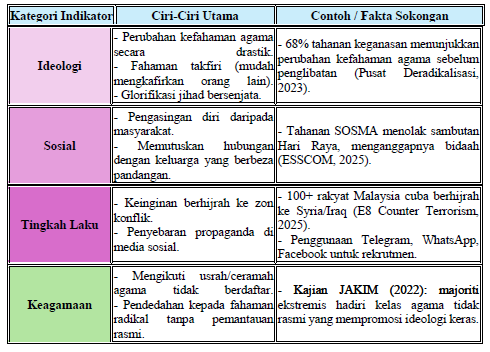
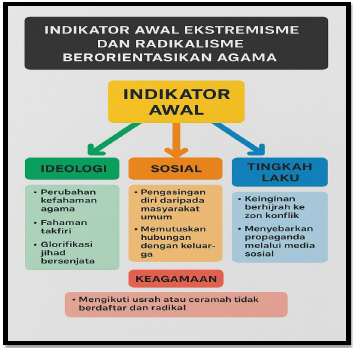
Faktor Penyumbang Kepada Fenomena Ekstremisme dan Radikalisme
Fenomena ekstremisme berorientasikan agama di Malaysia tidak berlaku secara tiba-tiba, sebaliknya berpunca daripada pelbagai faktor yang saling berkait. Antaranya ialah pendidikan agama yang tidak seimbang atau terlalu literal tanpa konteks sosio politik semasa, yang membuka ruang kepada pemahaman sempit dan takfiri. Ketiadaan kawalan terhadap sumber rujukan agama serta pengaruh tokoh agama radikal dari luar turut menyumbang kepada pembentukan ideologi ekstrem dalam kalangan pengikut muda. Selain itu, media sosial menjadi platform utama penyebaran propaganda luar negara yang bersifat manipulatif, memperkukuh naratif penderitaan umat Islam global dan mempromosikan jihad bersenjata sebagai jalan penyelesaian.
Faktor lain yang turut mendorong kecenderungan kepada ekstremisme ialah kekecewaan terhadap ketidakadilan sosial-politik global seperti konflik Palestin, Syria dan Rohingya. Isu-isu ini sering dimanipulasi oleh gerakan ekstremis untuk menimbulkan simpati dan kemarahan yang boleh diterjemahkan kepada tindakan radikal. Dalam konteks tempatan, marginalisasi sosial dan ekonomi, khususnya dalam kalangan belia, pelarian dan komuniti yang terpinggir, menjadikan mereka lebih mudah dipengaruhi oleh janji-janji perubahan dan perjuangan suci yang kononnya ditawarkan oleh kumpulan ekstrem. Gabungan faktor-faktor ini menjelaskan mengapa pendekatan pencegahan memerlukan strategi yang holistik dan menyentuh akar permasalahan.
Cabaran Untuk Mengesan Indikasi Awal Fenomena Ekstremisme dan Radikalisme
Cabaran utama dalam mengesan dan mencegah ekstremisme berorientasikan agama ialah kesukaran mengenal pasti proses radikalisasi pada peringkat awal. Radikalisasi sering berlaku secara tertutup dan bersifat peribadi, sama ada melalui interaksi dalam talian, kumpulan kecil keagamaan (usrah/taklim) atau individu yang terpengaruh dengan ideologi secara senyap. Tanda-tanda awal seperti perubahan dalam kefahaman agama, pemisahan sosial, atau penyebaran naratif takfiri sering kali tidak jelas dan mudah terlepas pandang. Hal ini menjadikan pemantauan dan campur tangan awal sangat mencabar, terutamanya dalam kalangan remaja atau individu yang dilihat ‘normal’ oleh masyarakat.
Di samping itu, kerajaan berdepan dilema antara menjamin hak kebebasan beragama dan memastikan keselamatan nasional. Tindakan keras terhadap individu atau institusi agama boleh mencetuskan reaksi balas jika tidak disertai bukti kukuh, lantas menimbulkan tuduhan diskriminasi agama. Undang-undang sedia ada seperti Akta Kesalahan Keselamatan (Langkah-Langkah Khas) 2012 (SOSMA) atau Akta Pencegahan Keganasan (POTA) pula memiliki keterbatasan dari segi penguatkuasaan terhadap bentuk ekstremisme bukan keganasan (non-violent extremism). Maka, pendekatan holistik yang merangkumi undang-undang, pendidikan, pencegahan awal serta kerjasama masyarakat amat diperlukan bagi menangani ekstremisme secara berkesan tanpa menjejaskan prinsip hak asasi manusia.
Garis Panduan dan Petunjuk untuk Mencegah Ekstremisme
Pencegahan ekstremisme agama memerlukan pendekatan yang menyeluruh dan berasaskan komuniti. Pendekatan seperti Community Policing dan Religious Outreach membolehkan agensi keselamatan dan pihak berkuasa agama mendekati masyarakat secara langsung, membina kepercayaan, serta mengenal pasti potensi radikalisasi lebih awal. Melalui jaringan setempat dan penglibatan imam, guru agama serta pemimpin komuniti, penyebaran ideologi ekstrem dapat dibendung sebelum merebak. Inisiatif ini juga memberi ruang kepada masyarakat untuk menjadi barisan hadapan dalam mencegah pengaruh luar yang bersifat radikal.
Institusi agama seperti JAKIM dan Majlis Agama Islam Negeri memainkan peranan penting dalam memastikan ajaran Islam yang disampaikan adalah seimbang dan berlandaskan prinsip rahmatan lil ‘alamin. Mereka bertanggungjawab memantau kandungan ceramah, khutbah, aktiviti keagamaan serta memberi pentauliahan kepada pendakwah yang sah. Selain itu, kerjasama antara institusi agama dan pihak keselamatan perlu diperkukuh bagi menangani ceramah tidak berdaftar yang cenderung membawa fahaman takfiri atau ideologi keras.
Sistem pendidikan agama juga harus dirombak dengan menekankan nilai keamanan, toleransi, dan kewarganegaraan sejagat. Modul pengajian perlu merangkumi pemahaman terhadap pelbagai mazhab, prinsip maqasid syariah dan konsep jihad dalam konteks moden. Dengan itu, generasi muda dapat membentuk pemikiran yang kritikal serta menolak naratif hitam-putih yang sering dipromosikan oleh kumpulan ekstrem. Pendidikan yang bersifat inklusif dapat menjadi benteng awal terhadap pengaruh ideologi pelampau.
Akhir sekali, program deradikalisasi dan rehabilitasi di penjara serta pusat tahanan perlu diperkasa secara sistematik. Program sedia ada seperti yang dijalankan oleh pihak polis dan Jabatan Penjara Malaysia harus ditambah baik melalui sokongan psikososial, kaunseling agama dan pemulihan ekonomi. Bekas tahanan perlu diberi peluang reintegrasi yang bermakna ke dalam masyarakat dengan pemantauan berperingkat. Pendekatan ini penting bagi mencegah kitaran semula radikalisasi (recedivism) dan menjamin keselamatan jangka panjang negara.
Kajian Kes
Kajian kes di Malaysia menunjukkan bagaimana proses radikalisasi boleh dikesan melalui indikator awal seperti perubahan ideologi, pengasingan sosial dan tingkah laku mencurigakan. Contohnya, kes individu seperti Muhammad Wanndy Mohamad Jedi yang menjadi anggota aktif ISIS di Syria dapat dikesan melalui mempromosi jihad bersenjata di media sosial dan penyebaran propaganda dalam Bahasa Malaysia. Begitu juga dengan penangkapan beberapa individu di Johor dan Sabah yang menghadiri kelas agama tidak berdaftar dan merancang untuk berhijrah ke zon konflik turut memperlihatkan corak radikalisasi awal.
Sejak tahun 2017, MDIO melalui Cawangan Anti Keganasan juga telah melaksanakan beberapa siri Program Deradikalisasi yang dikenali sebagai Program PERISAI SATRIA terhadap warga ATM yang telah dikesan melalui indikator awal. Beberapa indikator awal seperti yang telah dibincangkan menjadi petunjuk kepada Cawangan Anti Keganasan untuk memilih warga ATM yang didapati menunjukkan kecenderungan kepada elemen-elemen ekstremisme dan radikalisme. Dalam aspek pencegahan, program deradikalisasi oleh Polis Diraja Malaysia melalui Bahagian Counter Terrorism E8, Cawangan Khas telah berjaya memulihkan sejumlah individu yang terlibat dengan ekstremisme, dengan kadar kejayaan yang tinggi dalam mengelakkan pengulangan jenayah. Program ini menggabungkan kaunseling agama, sokongan psikologi serta reintegrasi sosial dan ekonomi yang menyeluruh, menjadikannya rujukan di peringkat antarabangsa dalam usaha menangani keganasan berasaskan ideologi agama.
PENUTUP
Sebagai rumusan, pengenalpastian awal terhadap indikator ekstremisme dan radikalisme berorientasikan agama adalah penting bagi membolehkan tindakan pencegahan dilaksanakan sebelum seseorang individu melangkah ke tahap keganasan. Perubahan dalam kefahaman agama, pengasingan sosial, penyebaran ideologi secara dalam talian serta penglibatan dalam aktiviti keagamaan tidak berdaftar merupakan antara petunjuk kritikal yang perlu diberi perhatian serius oleh semua pihak yang terlibat dalam keselamatan dan keharmonian negara.
Bagi memastikan pencegahan ekstremisme lebih berkesan, pendekatan bersepadu perlu diperkukuh antara agensi kerajaan seperti PDRM dan JAKIM, institusi agama negeri, institusi pengajian tinggi, pertubuhan bukan kerajaan (NGO) dan komuniti tempatan. Pendidikan agama yang seimbang, program deradikalisasi yang diperkemas serta penglibatan aktif masyarakat dalam mengenalpasti dan melaporkan tingkah laku mencurigakan adalah langkah ke hadapan. Di samping itu, penggunaan teknologi untuk pemantauan siber dan pembinaan naratif melawan ekstremisme dalam ruang digital juga harus diperkasa sebagai sebahagian daripada strategi masa depan.

